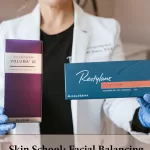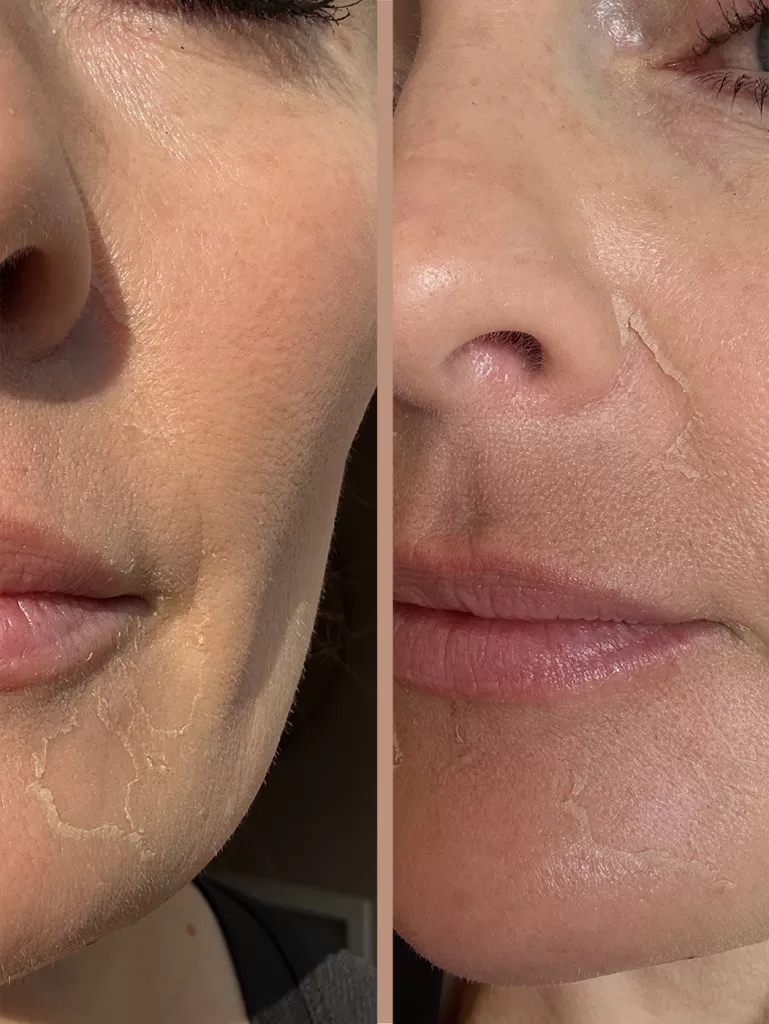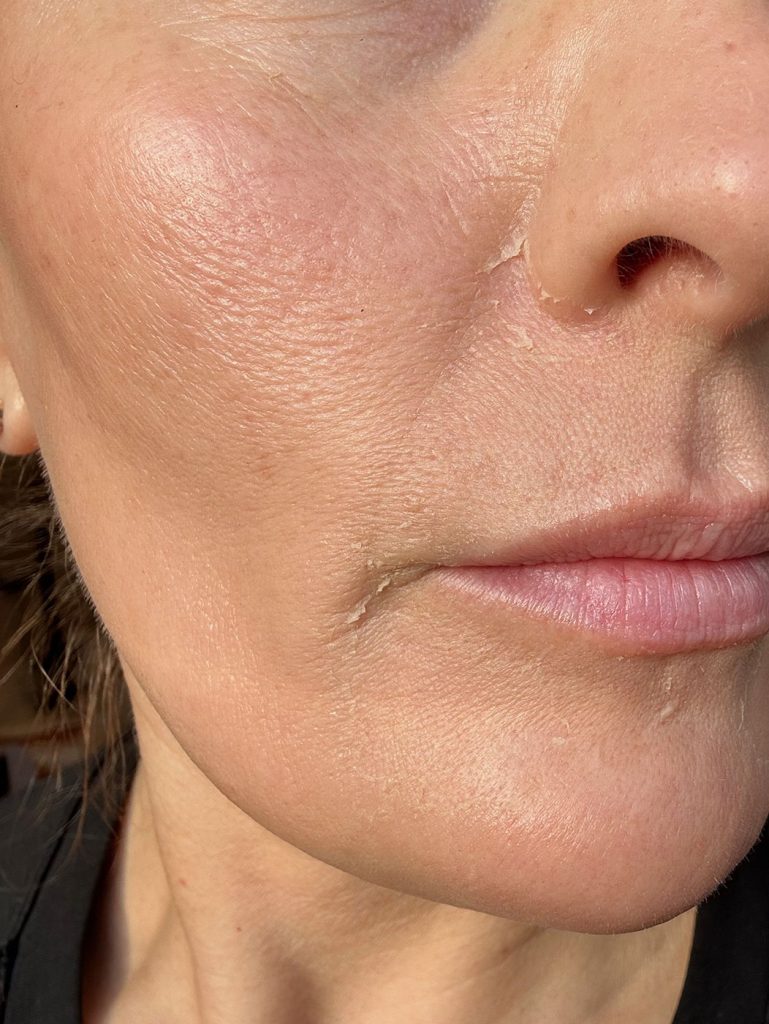A summer filled with sunshine, perspiration, and generous layers of sunscreen can sap the radiance from your complexion. However, dermaplaning offers a rejuvenating solution by effectively removing built-up residue. Wondering about the mechanics behind this procedure? Valeri Rusco, the founder of Direct Aesthetics, provides insight into dermaplaning, including its methodology, advantages, potential drawbacks, and associated expenses.
What is dermaplaning?
Dermaplaning stands as a facial exfoliation method that effectively eliminates layers of rough, lackluster, and impaired skin through a delicate blade. “The dermaplaning tool holds a sharp, straight-edged razor that smoothly traverses the skin, eliminating dead skin cells and fine hairs from the outermost layer, known as the stratum corneum,” explained Valeri.
What are the benefits of dermaplaning?
Exfoliation revitalizes the skin, enhancing its breathability, vitality, and receptivity to serums and treatments. Dermaplaning stands out as a particularly efficient exfoliation technique as it meticulously eliminates dead skin cells, yet does so in a “silent” manner.
“It doesn’t entail any suction or aggressive manipulation commonly associated with other exfoliation methods like microdermabrasion or scrubs,” explained Valeri. “It discreetly refines the skin’s surface, unveiling a radiant glow.”
During the dermaplaning procedure, unwanted facial hair situated above the epidermis is also eradicated, averting its regrowth in thicker strands.
What type of results should someone expect from dermaplaning?
Dermaplaning yields smooth, illuminated, and firmer skin. The effects typically endure for approximately 4-8 weeks, contingent upon individual skin characteristics and metabolism rates. Vellus hair, commonly known as peach fuzz, gradually regrows over the span of a month. Expect a slight roughness for a day or two as the hair reemerges, typically around two weeks post-treatment.
Terminal hairs, the thicker and darker strands often found around the lip and chin, tend to resurface sooner compared to waxing or other root-based removal techniques. For a more enduring solution to terminal hairs, laser hair removal proves to be a superior choice.
Who is dermaplaning best for?
Dermaplaning proves highly beneficial for most skin types, particularly those with delicate or thin skin that may not withstand harsh exfoliation methods, as well as for individuals prone to redness or broken capillaries. (Fun fact: Suction can exacerbate these conditions.)
Those with denser or darker facial hair often find dermaplaning especially appealing, as it promptly brightens the complexion by eliminating the dark shadow cast by vellus hairs—even in delicate areas like around the eyes!
However, younger skin doesn’t always respond favorably to dermaplaning, so as a general guideline, the treatment is recommended for individuals aged 25 and above. If you’re dealing with active acne, it’s wise to consult your skincare provider; dermaplaning might aggravate the condition, but a Direct Aesthetics professional can suggest suitable alternatives.
Are there any risks or side effects from dermaplaning?
Following dermaplaning, your skin may exhibit slight tenderness or a flushed appearance. Like with any new skincare procedure, the initial experience might feel unfamiliar. Valeri characterizes it as an “almost numb” sensation.
“The tiny hairs we remove also serve as receptors to nerve endings; their absence may lead to diminished sensation on the skin’s surface,” she explained. However, there’s no need for alarm: this numbness typically dissipates as your outer layer of protective dead skin regenerates.
Given the skin’s heightened susceptibility immediately post-dermaplaning, it’s crucial to minimize exposure to bacteria to prevent breakouts.
Valeri emphasized that each client’s response varies, with some individuals preferring alternative exfoliation methods. “I’ve observed that some simply don’t enjoy the feel of their skin post-dermaplaning and opt for the VI Peel treatment instead. Nevertheless, many adore dermaplaning, reveling in the smooth and soft texture of their skin afterward—especially after several sessions when their skin has adjusted and become more toned!”
How should someone prepare for a dermaplaning treatment?
Discontinue the use of your “actives” for 3-5 days prior to your treatment. This includes retinols, topical medications, AHAs, or any other products that could potentially heighten skin sensitivity. If your skin is currently irritated or inflamed, such as with a sunburn or chemical burn, it’s advisable to reschedule your dermaplaning appointment.
Post-dermaplaning tips
Following a dermaplaning treatment, it’s advisable to abstain from using active skincare products for 2-4 days, or until your skin returns to its usual state.
“I always recommend: Stick to a gentle cleanser, a neutral moisturizer, and physical SPF for the first few days,” Valeri recommended. “Steer clear of direct sunlight and other activities that generate heat, such as hot yoga, steam rooms, or extended periods outdoors.”
Additionally, ensure that anything touching your skin post-dermaplaning—such as makeup tools or pillowcases—is thoroughly cleaned.
How much does professional dermaplaning cost?
Dermaplaning facials rank among the top choices for treatments at Direct Aesthetics. This service is priced at approximately $75, as it’s exclusively offered at a medspa-type clinic operating under a physician’s license.
How is professional dermaplaning different than dermaplaning at home?
“The blades available over the counter are typically flimsy, small, and primarily intended for minor touch-ups,” Valeri explained. “They’re designed to remove visible hairs from small areas, such as the upper lip, but they lack the efficacy for proper exfoliation. Moreover, they can harbor bacteria, potentially leading to acne breakouts.”
In contrast, professional dermaplaning blades are crafted from the highest quality surgical steel, providing a thorough yet gentle exfoliation.
Both the expertise of the practitioner and the quality of the blade are paramount. An inadequate dermaplaning treatment may allow oils to accumulate beneath the skin, triggering breakouts.
“I strongly advise against attempting this at home,” Valeri cautioned. “The tools available are more likely to irritate your skin than offer any meaningful assistance.”




